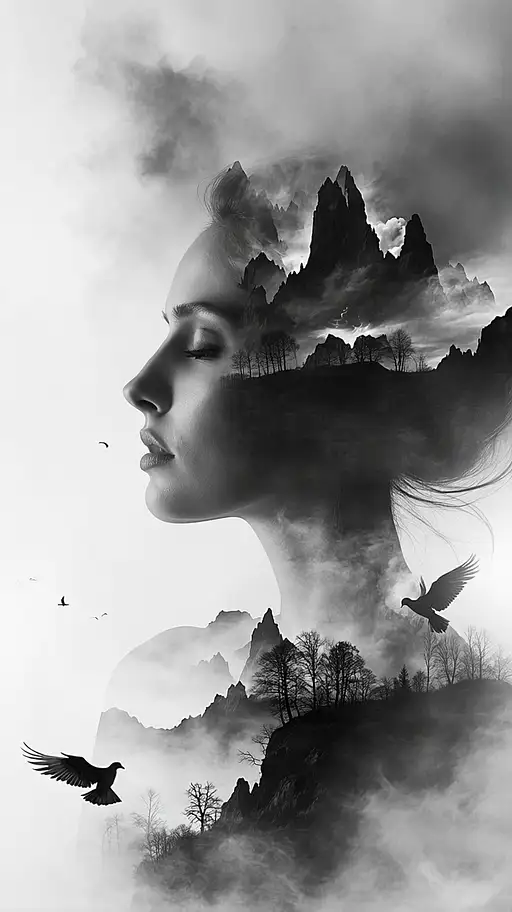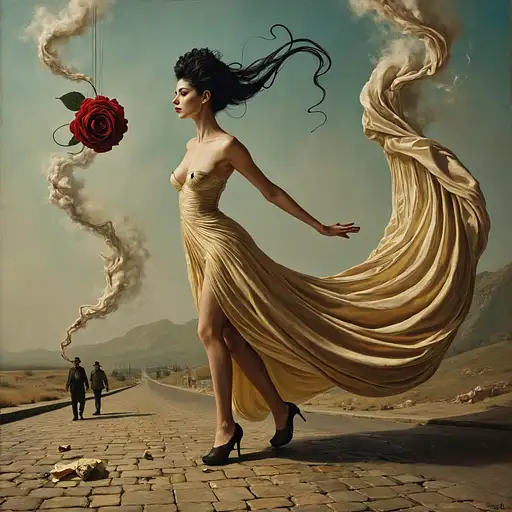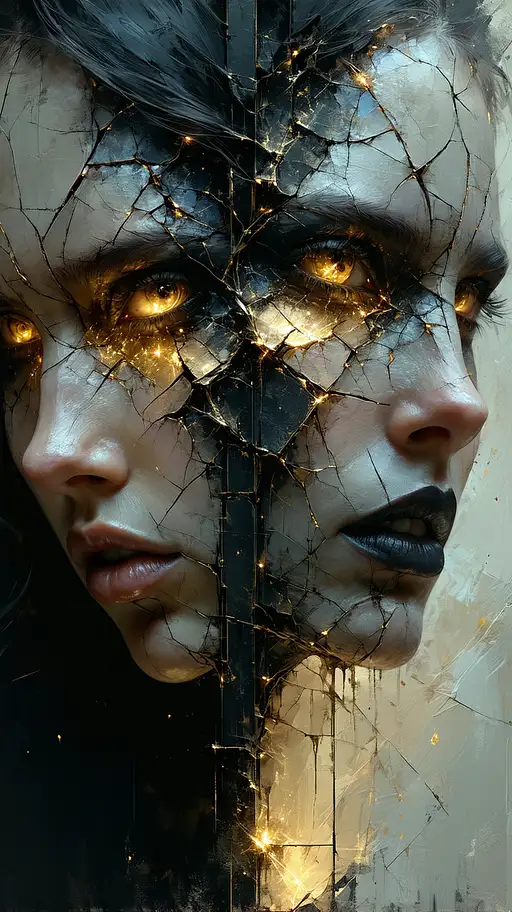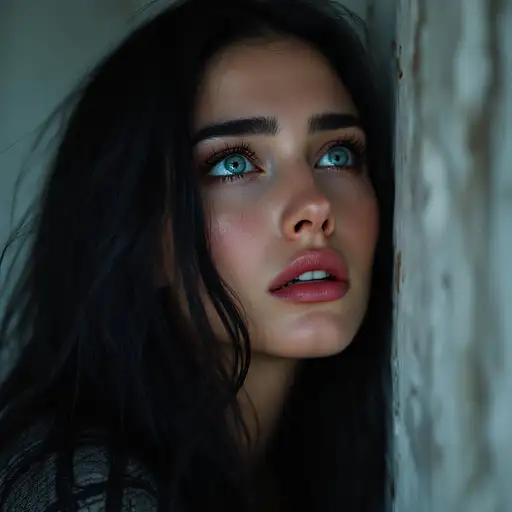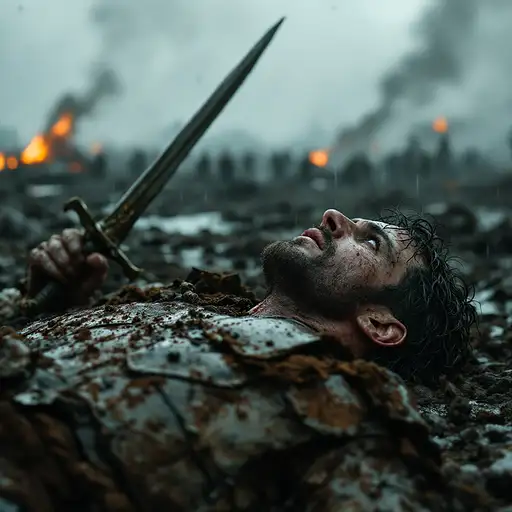
5 months ago
A woman stands still in the dim light, her head tilted slightly as a small, ornate vial of poison is pressed to her lips (1.5). Her eyes are closed tightly, her expression steeped in sorrow and regret, as though haunted by memories of lost love. A single tear rolls down her cheek, catching the faint green glow of the poison as it trails across her face. Her lips part slightly, trembling as she drinks the bitter, cold liquid, her body tense with the weight of her decision. The vial is delicate, crafted from glass that glows faintly with an ominous greenish light. Its liquid swirls unnaturally, casting faint reflections on her pale skin and trembling fingers. She wears a flowing, sheer white robe (1.4), its translucent fabric clinging softly to her body, revealing faint outlines of her figure beneath. The robe ripples gently around her arms and waist, as though stirred by an invisible breeze, and the poisonâs green glow reflects faintly off its delicate folds. Beneath her skin, a smoky, luminous green line is visible, beginning at her throat and trailing downward in a diffused, ethereal path (1.5). The line pulses softly, its edges hazy and shifting like luminous smoke, yet remaining unified as it flows through her body. The glowing trail brightens subtly as it descends, coiling delicately around her heart in a soft, radiant glow. The eerie green light from the poison interacts with the translucent robe, casting faint shadows and glowing highlights across her chest, amplifying the surreal beauty of the scene. Her free hand rests lightly against her chest, as though feeling the poisonâs icy presence as it travels through her. The other hand holds the delicate vial, her fingers gripping it tightly, the tension in her body underscoring her resolve and the bitter pain of the moment. She stands upright, her figure illuminated by the glowing green line and the faint light of the vial. The dark, minimal background fades into shadows, ensuring the glowing poison and her tear-streaked face remain the focal points. The atmosphere is suffused with emotional tension, the glowing green line serving as both a visual and symbolic representation of the poisonâs cold, invasive power. Her sheer robe, trembling posture, and closed eyes convey a haunting mix of regret, sorrow, and the inevitability of her choice.

